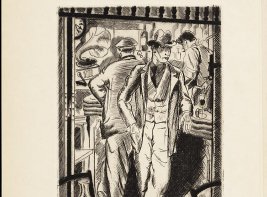200 chambres, 200 salles de bains
Year: 1927
Author: Valery Larbaud (1881 - 1957)
Artist: J.E. Laboureur (1887 - 1947)
Publisher: Jean Gondrexon, Le bon plaisir
Dubious book lover
Although the Dutch publishing career of this French bibliophile and printer may have been brief, his career as a collector was long and capricious. His library was ultimately auctioned in 1996 at Christie's in London, and that wasn't the first time that his books were put on the market. In 1996, the collection consisted mostly of English books, but it was originally made up mainly of French literature, which he had long collected with great care. Copies were printed especially for him, or signed by the author with autograph dedications. He sold off a great number just before World War II, and some of those books were purchased by Louis Koopman in Paris, after which they were presented once again to the authors, who would - sometimes rather spitefully towards Gondrexon - add a new dedication below the original one. Charles Vildrac hoped that Koopman would give the book a good home. François Mauriac was not amused, adding an exclamation point to his original dedication behind Gondrexon as book lover. René Arcos - whose 119-page manuscript Gondrexon sold off - also alluded to this affectionate enthusiast who apparently chose to rid himself of his book. The reason why Gondrexon sold off part of his collection around 1937 remains unknown.
Books from his collection sometimes became available in The Hague. His friend Stols noted in his diary on 24 August 1947 that he had discovered a very rare copy of Le secret du Belvédère at antiquarian book store Minerva: 'This copy had been given to Gondrexon by Larbaud to have it reprinted. It contained typographical notes pencilled in by Gondrexon, which I erased. I have let G. Jean-Aubry know about my discovery for his Larbaud bibliography'. The erasure of Gondrexon's typographical notes was typical, signifying not only the cancelled plans for publication, but also Gondrexon's disappearance from the Dutch publishing world - he was forgotten until the auction of his heritage in 1996...

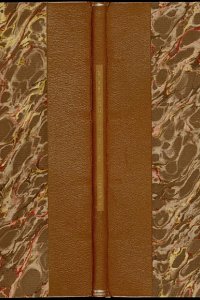
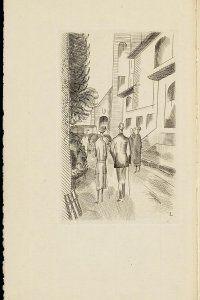
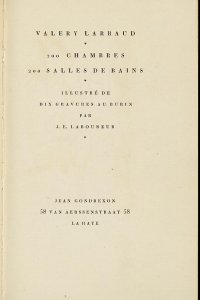

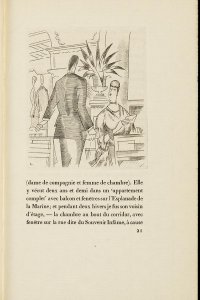
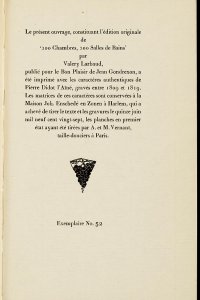
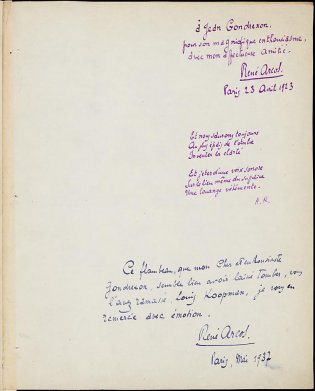
![Suite provinciale, pagina [4] met illustratie door Chagall](/sites/default/files/styles/gerelateerd_item_mob/public/images/suite-provinciale-p4.jpg?h=94488d80&itok=JkGwxSy4)

